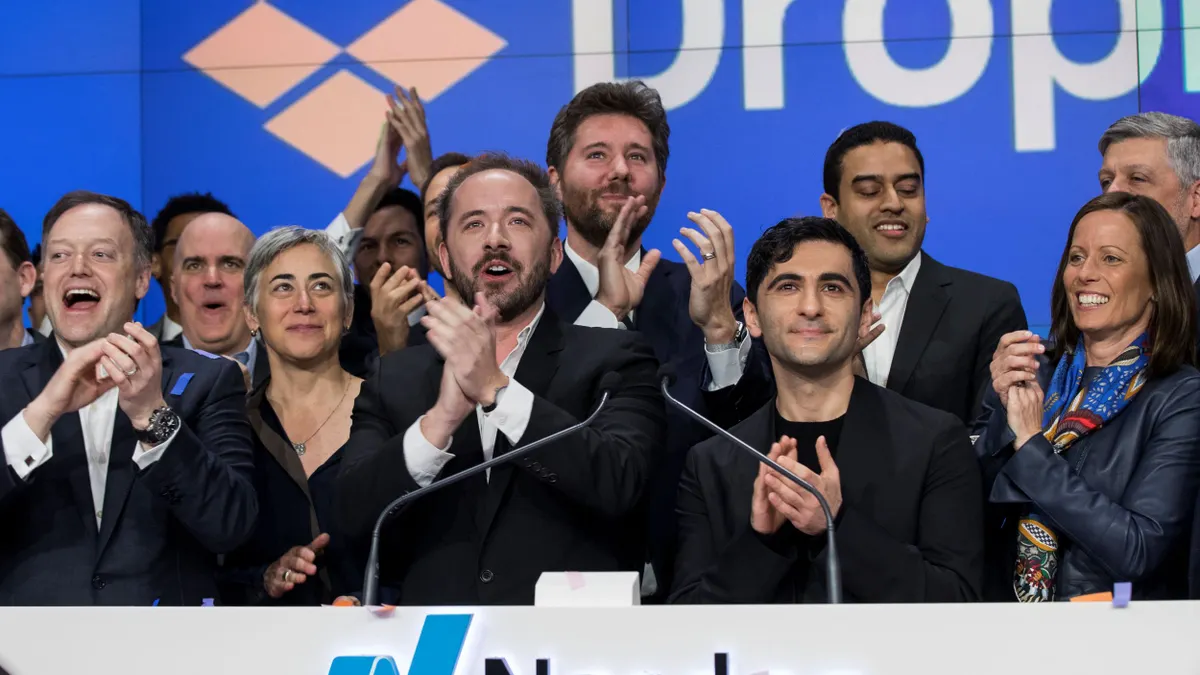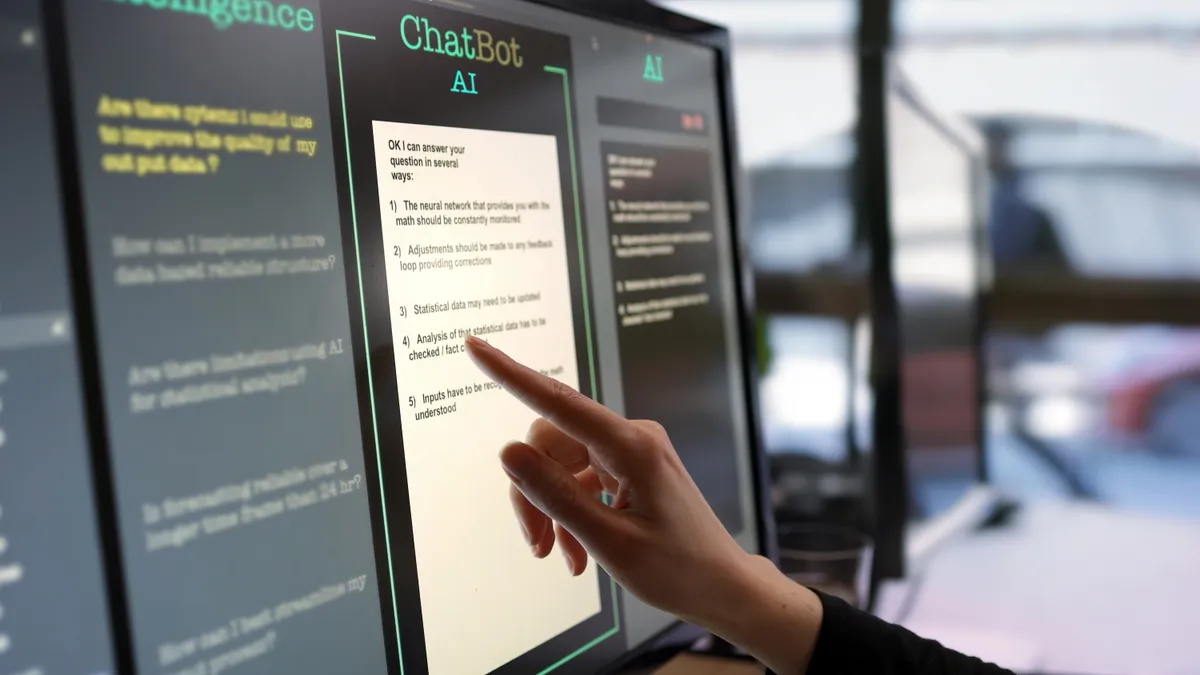CFOs typically see robotic process automation (RPA) as a way to free up staff to do higher-value work by automating a portion of the finance and accounting processes traditionally done manually, like reviewing and approving expense reports.
But finance chiefs can also create efficiencies, generate rich data sources for analysis, and reduce error and the potential for fraud by using RPA to automate payment processes, the head of an Australian start-up tells CFO Dive in an interview.
Kurt Knackstedt, CEO of Troovo, says his company is trying to create a niche by giving CFOs a way to automate their payments without having to make changes to their enterprise software and regardless of the system used by the bank or other provider that handles their payments.
“We’re positioning ourselves as having this little secret sauce — this robotic process automation engine — that takes people out of the process and can connect to any enterprise system with any payment provider,” Knackstedt told CFO Dive on Friday. “We’re here to say to a bank, ‘If you have a payment solution, maybe a virtual card, cross-border payment process, or just a traditional bank transfer process, and your customer has an enterprise system no one’s ever seen or worked with before, we can plug in the technology that extracts the transactions from the system and provide that to the bank to process payments. This helps speed up payments, and because it’s robotic, the company doesn’t have to touch the payment process. What’s more, since we’re integrating with existing systems, it makes it quick to get to market and get an ROI for both the payment provider and for corporate.”
Modular approach for quick integration
Troovo started out as an automated payment solution for corporate travel, which, because of its complexity, Knackstedt said, has prepared the company for handling any kind of payment system.
“Airlines, rental cars, hotels, the travel agent — some of these are prepaid, some use credit cards to hold payments,” he said. “On top of that, plans change, so you have to rebook. Troovo was built to cater to all these variables. So, we‘ve done all that and now we’re focused on using the system so companies can pay contractors, buy mobile phones, etc.”
Troovo is designed as modular software that CFOs can plug into their existing system. Installation takes two to four weeks, with most of that time spent writing and testing rules that will govern payments. The plug-in extracts the payment data from the enterprise system and then routes the payments through multiple channels with instructions to the bank or other payment vendor — a crypto provider like Bitcoin, an online provider like PayPal, or a credit card provider like MasterCard.
“The real power of RPA is, people don’t touch the payment process,” he said. “They also don’t get involved in creating the payment instructions, whether that involves a virtual card or a peer-to-peer transfer, or what have you, and from a CFO’s perspective, that’s a holy grail type of scenario. If we can eliminate people having direct access to making payments, then I drastically reduce and pretty much eliminate the risk that somebody’s going to do something that’s either untoward or just making a mistake by being human. And that’s the part of robotics that’s super powerful and super exciting for a lot of CFOs and risk and compliance officers.”
Knackstedt says his company can attach its middleware quickly because it doesn’t require getting into the core of the company’s enterprise system and making changes.
“Everyone’s got a different form of SAP or Oracle,” he said. “All we’re doing is pulling the transactions from their system through our API and the robotic engine that’s been designed to be agnostic to the source, so we don’t have to reconfigure the engine for each integration we do; the engine can process a purchase order from SAP Ariba, it can process an invoice from Quicken or a travel booking from the Sabre Travel Network. To the engine, it’s just, ‘What do I need to run my robotic process against?’”
Knackstedt says his middleware works even if the company is already integrating RPA into its accounting and finance processes, because of the modular approach it takes. “We built specific modules for specific tasks to be inserted into any workflow,” he said. “But because we’ve done the connectivity to the payment providers and also a number of enterprise systems, in a lot of cases we can help shorten the development time needed to deploy a full-blown RPA solution.”
Rich payment data available
Once the software is in place, CFOs can generate as much data as they want from each payment. He gave as an example a health insurance company he’s working with that is generating only bare-bones data from payments because it's relying on an old batch-file system that was never set up to extract rich data.
“All the insurance company is getting is top-level claim information: hospital name, dollar amounts, patient name, date of service, and a few other fields,” said Knackstedt. “Because the batch file is quite large, quite clunky to manage, the IT department had built a very high-level batch file to get the most basic information.”
Knackstedt said his company is integrating its process into the claim system to extract the entire claim record, which could be thousands of lines of information. “The insurance company will tell us, ‘I want to see not just hospital and patient name, date of service and dollar amount, but the services provided, total claim values, and hospital code, whatever is in the claim.’ Once we get access to the whole claim data, we can populate the statement with whatever they want to see.”
Troovo generates its revenue through licensing or revenue sharing. The licensing fee is flat and usually charged annually. It’s based on the total volume of payments processed. “It could be 10,000 payments, 50,000 payments or 100,000 payments,” he said.
The revenue sharing amount is based on what the bank or other issuer makes. “If Citibank is the issuer, and we’re going to generate an additional $200 million worth of charge or spend volume from their customers, then we’ll get several basis points of the interchange of the volume of spend that comes through our engine.”
According to a recent Gartner survey, as many as 70% of CFOs say they want to integrate RPA into their accounting or finance system within the next year. Troovo is offering an RPA system for a process that doesn't typically get fully automated in these RPA integrations: payments.




















